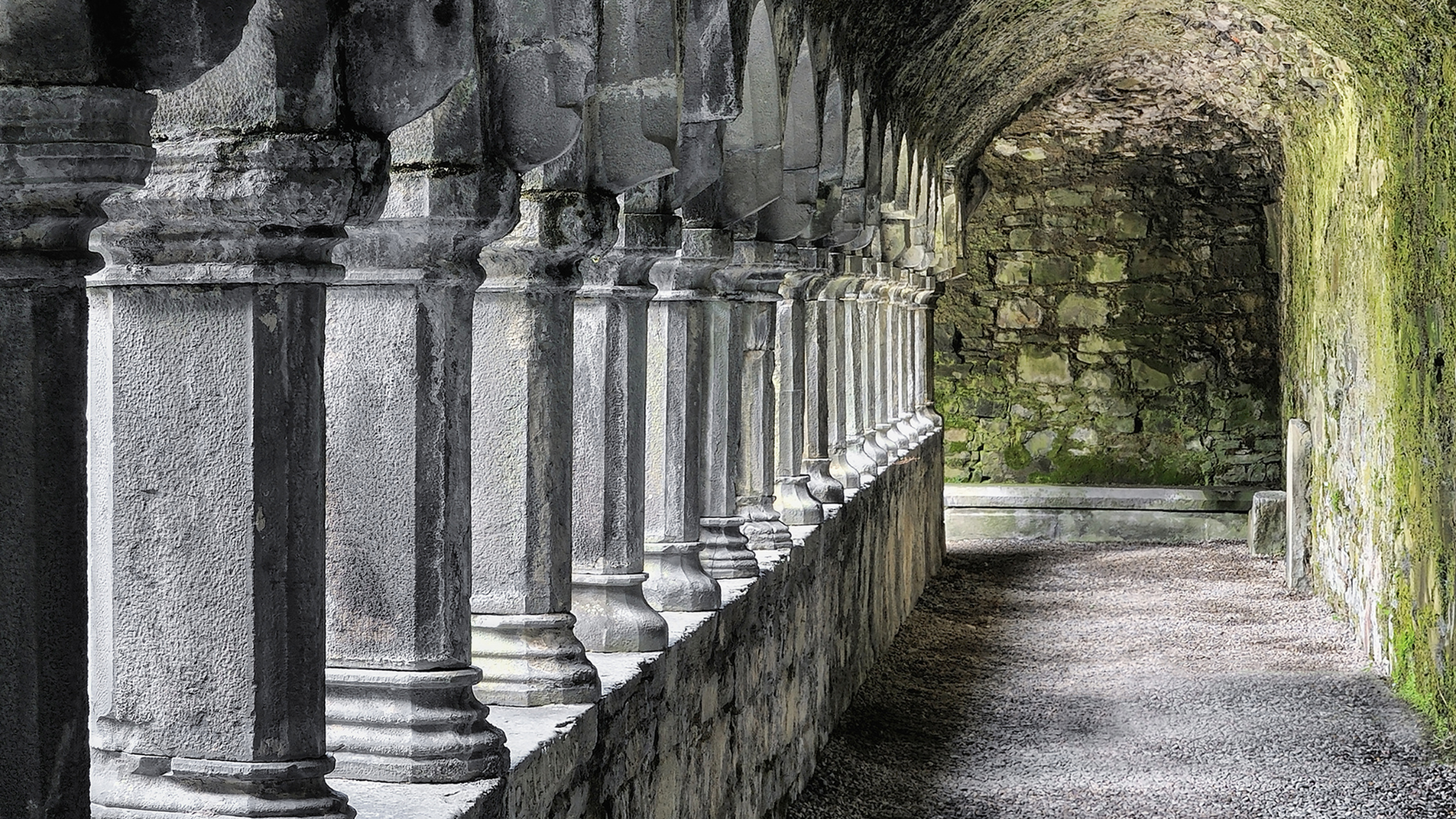The History of Sligo Abbey
Sligo Abbey, an Irish Monastic site, is entwined in a fascinating history dating back to the 13th century. Standing proudly as an icon of Sligo, its abbey has been the target of battles and fires over the years, but still stands to tell its story.
Uncover the history of Sligo Abbey with us in our blog below, where we’ll delve into the fascinating secrets that the abbey’s walls whisper, as well as the extraordinary architecture that remains today.
Who founded Sligo Abbey?
Maurice Fitzgerald, the Lord Chief Justice of Ireland, founded Sligo Abbey in 1253. Initially established as a Dominican friary, the abbey was designed as a place of worship for the Dominican Order.
Fitzgerald initiated the construction of the abbey, which was built in the classic Gothic architectural style of the period. Externally, the abbey had local limestone walls, simple lancet windows, arches, and minimal ornamentation.
Inside the abbey, the layout consisted of a long and narrow church with a single nave. There was a chancel at the eastern end, where an altar would’ve been placed. Monks would gather in the chancel for choir and prayers.
The original roofs of the abbey were most likely constructed from timber, a material that was most likely the culprit of fire spread later on.
The Accidental Fire and Battles of Sligo Abbey
In 1414, a large fire destroyed much of the abbey and its surrounding lands, without sufficient means for a reconstrution. The friary was later rebuilt in 1416 by Prior Brian and monastic life continued in the abbey, and monks could return to their sanctuary.
In 1530, the Dissolution of the Irish monasteries began in West Ireland. In 1568, a letter was sent to Donough O’Connor Sligo, from Queen Elizabeth, exempting Sligo Abbey as long as the friars became priests.
Later, during Tyrone’s Rebellion, Sligo Abbey was damaged, as Sligo Castle was besieged by Richard Bingham. Six companies of troops were dispelled across the abbey resulting in damage. By 1608, only one Father, O’Duane, remained in the abbey. For some time the abbey stood empty until later in the 18th-century, when friars returned to Sligo.
Unfortunately, at this point in 1760, much of the abbey had deteriorated beyond repair. The abbey grounds were then used as a cemetery and many of its buildings were used for reusable stone.
Architecture of Sligo Abbey: Now and Then
Much of the original architecture from the abbey’s reconstruction remains today, from the cloister arcade to the funerary monuments, offering plenty to see. Here are some architectural highlights we recommend looking out for:
1. Carved tombs
The collection of carved tombs, with intricate detailing, are one of the must-see sights at Sligo Abbey. Designed for noble individuals, the tombs showcase numerous religious scenes and heraldic symbology.
2. The 15th-century cloister arcade
Visitors can witness the impressive remains of the cloister arcade, which features pointed arches, column work, and a square courtyard. The cloister would have once been at the heart of the abbey, with monks gathering here daily and passing through on their way to prayer.
3. The Chapter Room
A chapter room in an abbey holds religious significance as the place to read the Rule of St. Dominic. Much of the chapter room at Sligo Abbey today retains architectural features such as decorative bosses and vaulted stone ceilings.
4. The 15th-century high altar
Amongst the most impressive sites at the abbey is its well-preserved stone high altar.
5. Lancet windows
You can still see the remains of the abbey’s lancet windows, which allowed natural light to flood the space appropriately.
6. Piscina
A piscina was a space used for washing liturgical vessels and is still a remaining feature today.
7. Notable monuments
The two notable funeral monumnets include the O’Craian altar tomb, the oldest surviving, and the O’Connor mural.
Visiting Sligo Abbey
Sligo Abbey is open throughout the year, and welcomes respectful visitors who want to explore more of the abbey’s history. You can find the abbey here:
Abbey Street,
Sligo
F91 K796
Note that there is an on-site carpark if you’re travelling by car.
Sligo Abbey is open from 13th March - 30th December from 10:00-18:00. Admission prices vary as listed below:
Adult: €5.00
Group/Senior: €4.00
Child/Student: €3.00
Family: €13.00
Make the Most of Sligo
Why not make the most of your trip to Sligo Abbey with a stay at The Riverside Hotel? Offering a range of stylish rooms just a short walk from the abbey, our hotel is a prime location for enjoying all of the sights in Sligo.
With an on-site cafe and the Mill Bar & Restaurant, you can rest assured that your appetite will be satisfied after a long day of historic exploration. Our hotel is located in a prime spot for exploration of Sligo’s beaches too, making it ideal for a summer holiday.

